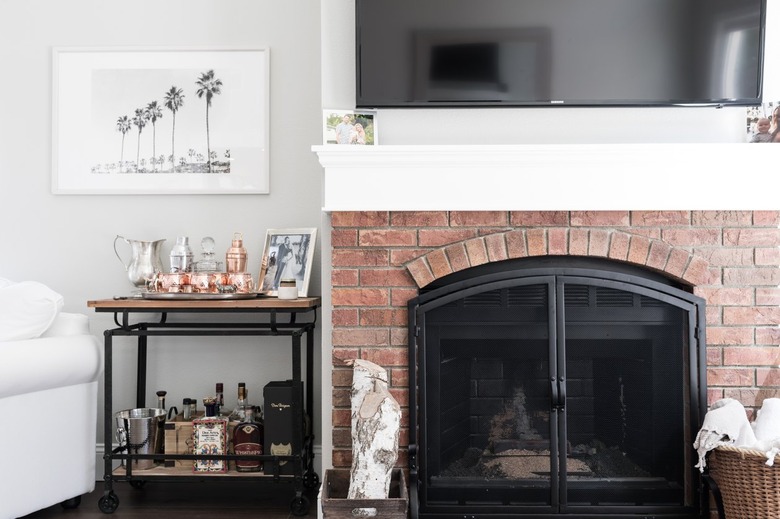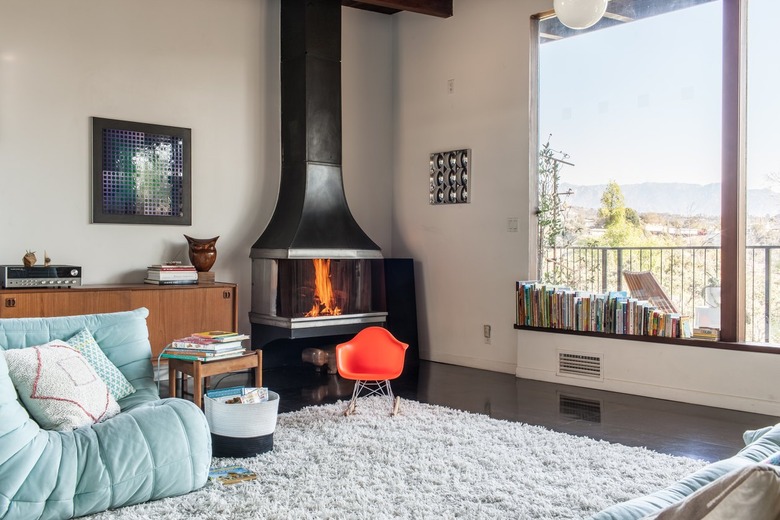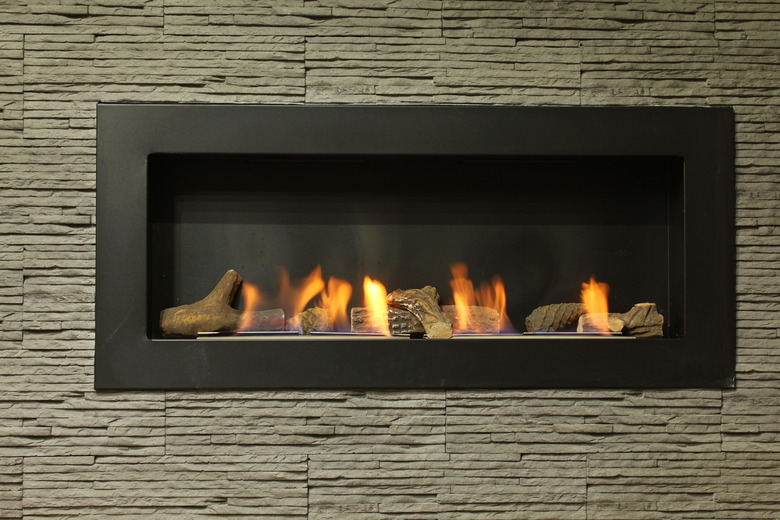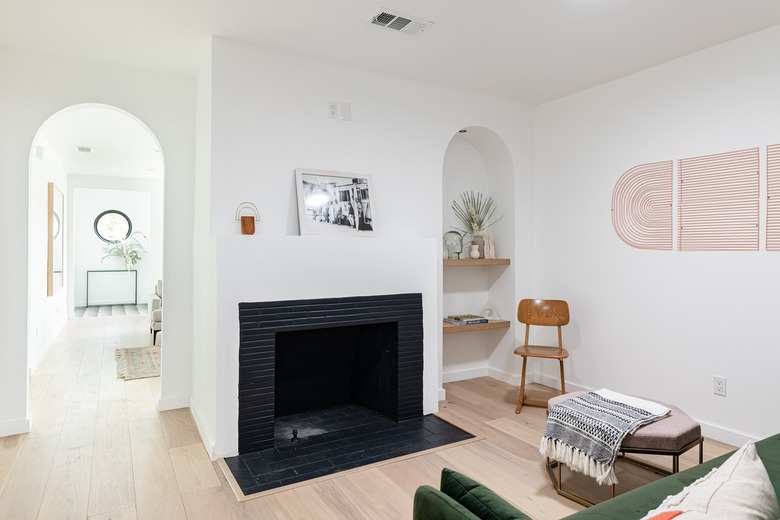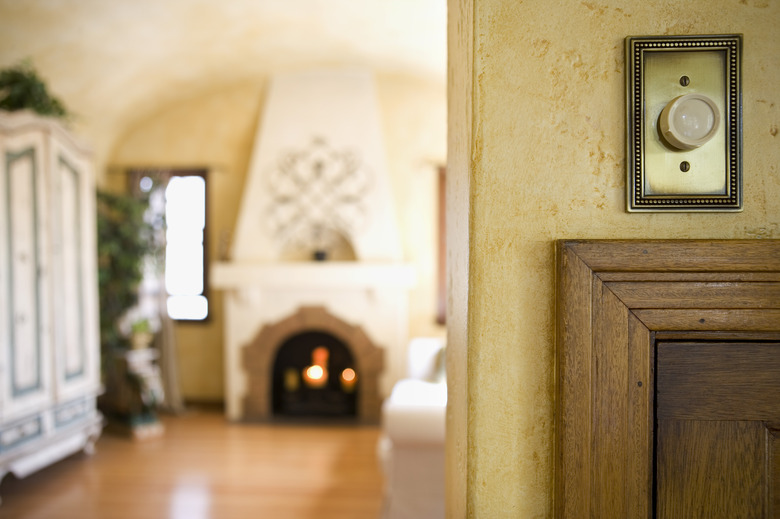Gas Vs. Electric Fireplace: Which Is Best For Your Home?
Comparing gas vs. electric fireplaces and deciding on one for your home can be a bit of a challenge. Since they both have their own pros and cons, there's no single answer for every homeowner. For example, if you rely on the heat from your fireplace to keep you warm and you love the appearance of real flames, a gas fireplace is the right choice. On the other hand, if you're longing for the classic crackling sounds of a traditional wood-burning fireplace but want to use your fireplace on warm summer nights, an electric fireplace is the right choice. For most homeowners, the decision is not so simple, so it pays to understand the differences between these two types of fireplaces.
Gas vs. Electric Fireplace Prices
Gas vs. Electric Fireplace Prices
Purchasing and installing a gas fireplace is almost always more costly than purchasing and installing an electric fireplace. That being said, it's important to recognize that the price for a gas fireplace will vary dramatically based on the type and the size of the model. There are three main types of gas fireplaces, and each has a different price point:
Ducted Vent Gas Fireplaces
Average cost: $2,000
Sometimes called B-vent or natural vent, ducted vent gas fireplaces are more traditional models with an open front that takes air from inside the home to feed the fire and then vents the exhaust outside through a flue. These designs have the lowest energy efficiency of all types of gas fireplaces because they let a good amount of warm air escape out the chimney, but many people like that the open-front design is the closest to that of traditional wood fireplaces. These are also the cheapest type of gas fireplaces, typically costing around $2,000, but it's important to recognize that these models can only be installed in homes with chimneys.
Ventless Gas Fireplaces
Average cost: $2,300 – $7,500
Ventless gas fireplaces burn very efficiently — so much so that they can safely vent the exhaust indoors. This means they can be installed in places where vented fireplaces would be impractical, such as internal walls, though they can also be installed inside the firebox of an existing fireplace. It's important to note that many state and local building codes prohibit the installation of ventless gas fireplaces due to the risk of carbon monoxide exposure, which can result in nausea, breathing difficulties, unconsciousness, and death.
Direct Vent Gas Fireplaces
Average cost: $3,500 – $7,500
Direct vent gas fireplaces are more efficient than B-vent models since they take air from outside the home to feed the fire and then vent the exhaust outside the home. These designs typically have a fixed glass front that separates the air inside the home from the air inside the fireplace. These are the most expensive types of gas fireplaces.
Electric Fireplaces
Average cost: $250 – $6,200
While electric fireplaces all operate in a fairly similar manner, there are a great variety of designs available, including built-in models, wall-mounted designs, masonry fireplace inserts, TV console pieces, freestanding wood stove designs, traditional manteled fireplace styles, and dual-sided models that can be placed between two adjoining rooms. Most models will cost between $250 and $650, but expect to pay more for luxury designs, like dual-sided electric fireplaces, which cost up to $6,200.
One thing to keep in mind when evaluating the upfront costs of these fireplaces is that while parts from a gas fireplace can be easily repaired or replaced by a plumber or fireplace specialist, electric fireplaces have a lot of mechanical and electrical components that may be difficult, expensive, or even impossible to replace. This is why the warranty on gas fireplaces is typically much longer than the warranty on electric fireplaces.
Installation
Installation
Installing some electric fireplaces can be as simple as plugging the unit into a standard wall outlet, meaning there is very little effort or cost involved with installation. But some installations require cutting a hole in the wall, adding new framing, installing a mounting bracket, and installing a new 120- or 240-volt electrical outlet. You can either install the fireplace yourself or hire a professional to do it for you. Professional installation will usually only cost a few hundred dollars because the process is typically fairly simple. If you need a new outlet, you will need an electrician to handle the wiring, which usually costs between $150 and $300.
Gas fireplaces, on the other hand, are more labor intensive to install, and a plumber is necessary to handle the gas hookup. The price of installation will vary dramatically based on the type of fireplace, your home's existing setup, and the installation location, but typically, installation will cost anywhere between $2,300 and $10,000. For a direct vent fireplace, the installer will need to add a vent if there is not one already present. If your home already has natural gas or propane service, a plumber will need to run a new branch gas line to the fireplace.
While gas fireplaces cost more to purchase and to install, they also have a higher return on investment. Homes with fireplaces can sell for 13 percent more than the median sale price, and sellers of these homes are more likely to receive their asking price. Gas fireplaces are the most attractive type to homebuyers, whereas electric fireplaces are not often seen as permanent fixtures.
Fireplace Heating Ability
Fireplace Heating Ability
One benefit of both gas and electric fireplaces is that they both immediately start heating your room once lit, unlike wood fireplaces that take a while to warm up. When comparing the heat produced by a gas vs. electric fireplace, though, the gas fireplace wins every time. That's because most electric fireplaces produce between 4,500 and 5,000 Btu, which is around the same amount of heat as a space heater. Even high-powered fireplaces can produce at most 8,500 Btu.
Gas fireplaces produce anywhere from 6,000 to 70,000 Btu, with an average of 25,000 to 40,000 Btu. On paper, gas fireplaces are less energy efficient than electrical fireplaces, losing between 10 and 50 percent of the heat they produce vs. the 100 percent efficiency of heat conversion for electric units. But even a low-grade gas fireplace typically produces as much or more heat than an electric model. Plus, gas fireplaces continue to be useful during power outages. Even most models that require electricity to operate the ignition system have battery backup in case of outages.
It's easy to be fooled by the claims of 100 percent energy efficiency touted by electric fireplace manufacturers. While electricity converts to heat with almost no loss of energy, producing electricity at a conventional power plant and transporting it to your home is highly inefficient (less than 40 percent efficient).
Costs of Use
Costs of Use
When deciding between a gas vs. electric fireplace, the upfront cost is only part of the equation. Natural gas is typically cheaper than electricity, meaning it is typically more cost effective per Btu of heat output. But because gas fireplaces typically have much higher Btu output, they end up costing more to run. Propane-powered fireplaces are more expensive than those powered by electricity or natural gas. That being said, comparing costs can be difficult, especially when you factor in the 50 to 90 percent efficiency of a gas fireplace compared to the 100 percent efficiency of an electric fireplace.
As an example, the national average cost for electricity is around 13 cents per kilowatt-hour (kWh), whereas natural gas typically costs around $1.22 per therm (approximately 100,000 Btu), and propane costs around $3.27 per therm. A 1,500-watt electric fireplace that produces 5,000 Btu costs 19.5 cents per hour to operate. For comparison, a small 6,000 Btu gas fireplace that operates at 85 percent efficiency would effectively produce a comparable 5,040 Btu (6,000 Btu x 0.85 efficiency) at a cost of 7.3 cents (0.06 therm x $1.22) to run for an hour if using natural gas and 19.6 cents (0.06 therm x $3.27) an hour to operate with propane.
For a standard gas fireplace, though, the operating costs are much higher. As an example, a 25,000 Btu gas fireplace that is 85 percent efficient effectively provides 21,250 Btu (25,000 Btu x 0.85 efficiency) of heat, but it costs 30.5 cents (0.25 therm x $1.22) an hour using natural gas and 81.8 cents (0.25 therm x $3.27) per hour using propane.
It's important to remember that while a 5,000 Btu fireplace could only heat a 400-square-foot space, a 25,000 Btu fireplace could heat a 1,400-square-foot space. Most electric fireplace operators need to rely on a secondary heating source, but a gas fireplace may provide enough heat to allow you to turn off your thermostat. If this is the case, then a natural gas fireplace could end up paying for itself despite the higher initial investment and the higher per hour operating cost.
Ease of Use
Ease of Use
Both gas and electric fireplaces are easy to use and fairly low maintenance, especially when compared to wood-burning fireplaces. Some are so simple to operate that they can be operated with a remote control, and those that require manual adjustment still only involve a simple push of a button or twist of a dial. Electric fireplaces may have more options than other types of fireplaces, allowing you to control the brightness of the flames, turn up the heat or shut it off completely, adjust the color of the flames, and even turn on or off the wood-crackling sounds like those created by a burning log.
Both types of fireplaces need the glass to be cleaned on occasion, but a gas fireplace is a little more difficult to clean because the flames can produce a small amount of soot. Gas fireplaces should be inspected by a professional once a year, and those with flues require the chimney to be cleaned once a year.
Important Safety Considerations
Important Safety Considerations
As both electric and gas fireplaces produce heat, either one can become a burn or fire hazard. Never store flammable items near the fireplace and make sure children and pets keep their distance. If safety is your main concern, an electric fireplace is the best option, as it produces no carbon monoxide and can be operated with no heat.
To prevent potentially deadly carbon monoxide buildup in your home while using a gas fireplace:
- Make sure the fireplace is installed by a professional
- Keep up with yearly inspections and chimney cleanings
- Never block the vent
- Install a carbon monoxide detector in the same room as the
fireplace - If you ever smell gas, leave the home immediately and call
your local gas company
Aesthetics and Ambiance
Aesthetics and Ambiance
When it comes to looks, you're certain to find attractive designs for both gas and electric fireplaces that can fit in with your decor. Some people find the aesthetic of a real flame to be unrivaled and will never find the simulated fire of an electric fireplace to be a good enough substitute. It is, however, becoming more and more difficult to tell the difference between an electric fireplace's artificial flames and real flames as technology continues to get better in this regard.
If you love the crackling sound of wood, this is only available in some electric models. Otherwise, both gas and electric models are usually silent, though both varieties may include a blower to push warm air further into the room, which may be a little noisy, especially in older models.

